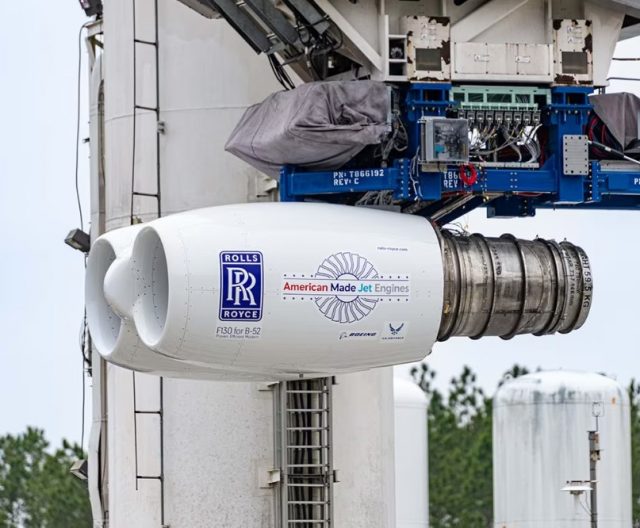Rolls-Royce, the company in charge of delivering engines that will allow the US Air Force’s B-52 strategic bomber for 30 more years, says it has launched F130 engine testing at its outdoor test facility at the NASA Stennis Space Center in Mississippi.
The US Air Force picked Rolls-Royce in 2021 to deliver F130 engines to replace the existing powerplants in the sixty-year-old B-52 fleet, with over 600 new engine deliveries expected.
This milestone test program is the first time F130 engines have been tested in the dual-pod engine configuration of the B-52 aircraft, the company said. Each B-52 aircraft has eight engines in four pods.
The engine testing will focus on crosswind aerodynamic flow as well as confirming the successful operation of the engine’s digital controls system. Early results from the testing have been very positive with additional test data to be analyzed over the next several months.
Rolls-Royce is collaborating with the Air Force and Boeing, which is managing the overall engine integration and B-52 aircraft modernization program. The new engines will extend the life of the B-52 aircraft for 30 years.
Derived from the Rolls-Royce BR family of commercial engines, F130 engines will be manufactured, assembled and tested at Rolls-Royce facilities in Indianapolis.
The B-52H is a long-range, heavy bomber that can perform strategic attack, close-air support, air interdiction, offensive counter-air and maritime operations. The bomber has been in service since the 1950s and is capable of flying at high subsonic speeds at altitudes up to 50,000 feet. It can carry nuclear or precision guided conventional ordinance with worldwide precision navigation capability.
We predict a windy forecast this #B52sday at #ASC22. 💨
— Boeing Defense (@BoeingDefense) September 20, 2022
The #B52 Commercial Engine Replacement Program completed wind tunnel testing using similar models used by engineers in the 1950s to collect data for future flight tests. This ensures the new engines will work as expected. pic.twitter.com/33JYrx7jbD
The new engines on the B-52s are expected to remain on the B-52H through at least 2050, increase fuel efficiency, increase range, reduce emissions in unburned hydrocarbons, and significantly reduce maintenance costs.
The first two fully modified B-52s are projected to deliver by the end of 2025 and will undergo ground and flight testing. The first lot of operational B-52s with the new engines is projected to deliver by the end of 2028 with the entire fleet modified by 2035.
“We are excited to begin this milestone testing program, the first step for what will be decades of successful engine operation for the United States Air Force B-52 fleet. We look forward to sharing test results with the Air Force and Boeing as the test plan progresses at the NASA Stennis Space Center,” Candice Bineyard, director, programs – defense, said.



























